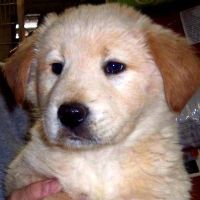What is Mean Shift Segmentation?
Mean Shift is an unsupervised clustering algorithm used in computer vision and image processing. Unlike K-Means, you don’t need to tell it how many clusters to create. Instead, it automatically discovers “modes” (peaks) in the data distribution.
For images, this means pixels with similar colors and locations are grouped together, producing smooth regions while preserving important boundaries. The result looks artistic and natural — almost like your photo has been painted with a clean brush stroke.
Why Use Mean Shift?
- Create painterly, smooth artistic effects while keeping edges sharp.
- Simplify noisy photos into clean colour regions.
- Automatically find patterns without guessing the number of clusters.
- Great for both creative projects and for preprocessing.
Before and After Example

.png)
How It Works (Simple Explanation)
Imagine placing a window (like a magnifying glass) over part of the image. You calculate the average colour and location of the pixels inside it. Then you “shift” the window toward this average. This process repeats until the window stops moving — meaning you’ve found a cluster of similar pixels. Each cluster forms a region in the final image.
The Mathematics Behind Mean Shift
The core idea of Mean Shift is finding modes in a probability density function without assuming its shape. Given a set of points x₁, x₂, …, xₙ, we estimate the density using a kernel function K:
f̂(x) = (1 / (n · hd)) · ∑i=1n K( (x - xᵢ) / h )
Here, h is the bandwidth (like the radius of the search window), and d is the dimension. The Mean Shift vector is:
m(x) = ( ∑i=1n xᵢ · g( ‖x - xᵢ‖² / h² ) ) / ( ∑i=1n g( ‖x - xᵢ‖² / h² ) ) - x
At each step, the point x is updated to the weighted mean of its neighbors. When the Mean Shift vector m(x) becomes very small, you’ve reached a mode (cluster center). In image segmentation, this means pixels converge into regions of similar colour and texture.
How to Use This Tool
- Upload your image.
- Set parameters: spatial radius, color radius, and pyramid level.
- Click Convert to process your photo.
- Download your stylized result instantly.
Quick Tips
- Higher color radius → stronger color merging.
- Higher spatial radius → larger, smoother regions.
- Use pyramid levels (up to 8) for faster processing.
- If results look too patchy, try lowering the radii slightly.
Frequently Asked Questions (FAQ)
Q: Is this tool free?
Yes, it’s 100% free and browser based.
Q: Which formats are supported?
JPG, PNG, and WEBP are supported.
Q: Is my image safe?
Yes, your image is processed securely and discarded immediately after conversion.
Q: What do the parameters mean?
Spatial radius controls neighborhood size, colour radius controls similarity in colour, pyramid level speeds up processing at the cost of detail.
Q: How is Mean Shift different from K-Means?
K-Means fixes the number of clusters beforehand, while Mean Shift automatically discovers clusters and preserves edges better.
Q: Can I use this on mobile?
Yes, it works on all modern browsers.
Real-Life Applications
Mean Shift isn’t just for fun effects — it’s also used in medical image analysis, video object tracking, self-driving cars and pattern recognition. By trying it here, you get both creative output and a real-world experience.
Explore More Tools
Try our other effects: KMeans Converter, Edge Video Converter, Image Denoiser, Negative Video Converter, Fire Effect Converter, or KMeans Video Converter.
Try It Yourself
Upload a photo, set your parameters and instantly generate an elegant, stylized version. Play with different values to balance realism and creativity.